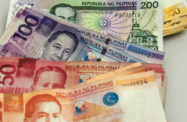Newly approved legislation mandating a biometric national identity card is expected to help bring unbanked Filipinos into the financial fold.

President Rodrigo Duterte signed the Philippines Identification Systems (PhilSys) Act on August 9, and plans are under way to launch the ID scheme provisionally in December 2018. The act aims to boost financial inclusion, streamline bureaucratic processes, and reduce fraud and corruption.
As well as standard information such as full name, gender, place and date of birth, address and blood type, the new ID card will carry detailed biometric data, a photo, fingerprints and an iris scan.
Spearheaded by the Philippines Statistics Authority (PSA), PhilSys will be piloted in a number of regions around the country, with up to 1m citizens initially covered ahead of the rollout of broader implementation in 2019. All Filipinos are expected to be issued a PhilSys card within five years.
The cost of the programme has been estimated at $555m, with a number of private sector companies, including Unisys Philippines, AC Infrastructure and Aboitiz InfraCapital, among those applying to develop the platform. Contracts for the ID system are provisionally set to be signed by November.
The news should be welcomed by players in the financial sector, which in the past have highlighted the absence of a standardised ID as a hindrance to financial inclusion efforts. “The lack of a national ID is one major obstacle to on-boarding customers in a cost-effective manner,” Simoun Ung, president and CEO of OmniPay, a Philippines-based non-bank financial institution, told OBG earlier this year.
Asian Development Bank approves $300m loan
Efforts to improve financial inclusion received another boost on September 19, when the Asian Development Bank approved a $300m loan to help create a “resilient and inclusive finance sector” in the Philippines.
The money is part of the lender’s Inclusive Finance Development Programme in the Philippines, which entails implementing the infrastructure, and institutional and policy environment for financial inclusion, and strengthening the capacity of financial service providers.
Majority of citizens remain unbanked
Only around 22.6% of the adult population, or 15.8m Filipinos, have a bank account, according to a financial inclusion survey published in July by Bangko Sentral ng Pilipinas (BSP), the central bank.
The report also highlighted the slow pace of growth in financial inclusion: between 2015 and 2017 the number of Filipinos with a bank account increased by only 0.6 percentage points.
Of the more than 77% of the population without a bank account, 18% said they did not have the required documentation to enter the formal banking system. With some estimates putting the number of Filipinos without a birth certificate at 7.4m, it is hoped that PhilSys will address this problem.
In addition, the survey data shows that women are twice as likely to have a bank account than men, and are particularly apt to be signed up with microfinance organisations and co-operatives.
The gender imbalance in financial inclusion in the Philippines is the reverse of that in most developing countries, and could serve as a pointer for banks and other financial institutions when developing programmes to attract clients. Women seem to have a more positive attitude towards the formal banking sector, while men could be targeted more specifically by marketing campaigns.
Perception poses challenge to uptake of electronic payments
Another route to boosting financial inclusion is encouraging more citizens to avail themselves of digital payment systems outside the traditional banking network; however, the central bank’s survey found that, out of a sample size of 1200 people, only 1.3% had an e-money account. This represents a very low level of penetration considering that smartphone ownership stands at 59%, according to GSMA, a global telecoms industry association.
Work seemingly needs to be done to change perceptions about electronic transfers: 46% of account holders with internet access are ambivalent about e-payments due to apprehensions about security and data hacking.
Concerns regarding data privacy have also been raised about the PhilSys programme, given that it entails collecting biometric information from the entire population. The PSA will be responsible for handling information collected on individuals, and while supporters of PhilSys say that this will be done securely, some observers have noted the potential for mass surveillance.
Despite these challenges, progress has been made in recent years to improve the digital payment ecosystem. One major step was taken in November last year, with the launch of the Philippine Electronic Funds Transfer System and Operations Network (PESONet).
PESONet acts as an electronic alternative to the paper-based cheque system, and aims to ease payments between individuals, businesses and public bodies. It was also the first automated clearinghouse to be launched under the National Retail Payment System, a policy framework that seeks to “provide direction in carrying out retail payment activities through BSP-supervised financial institutions”.


